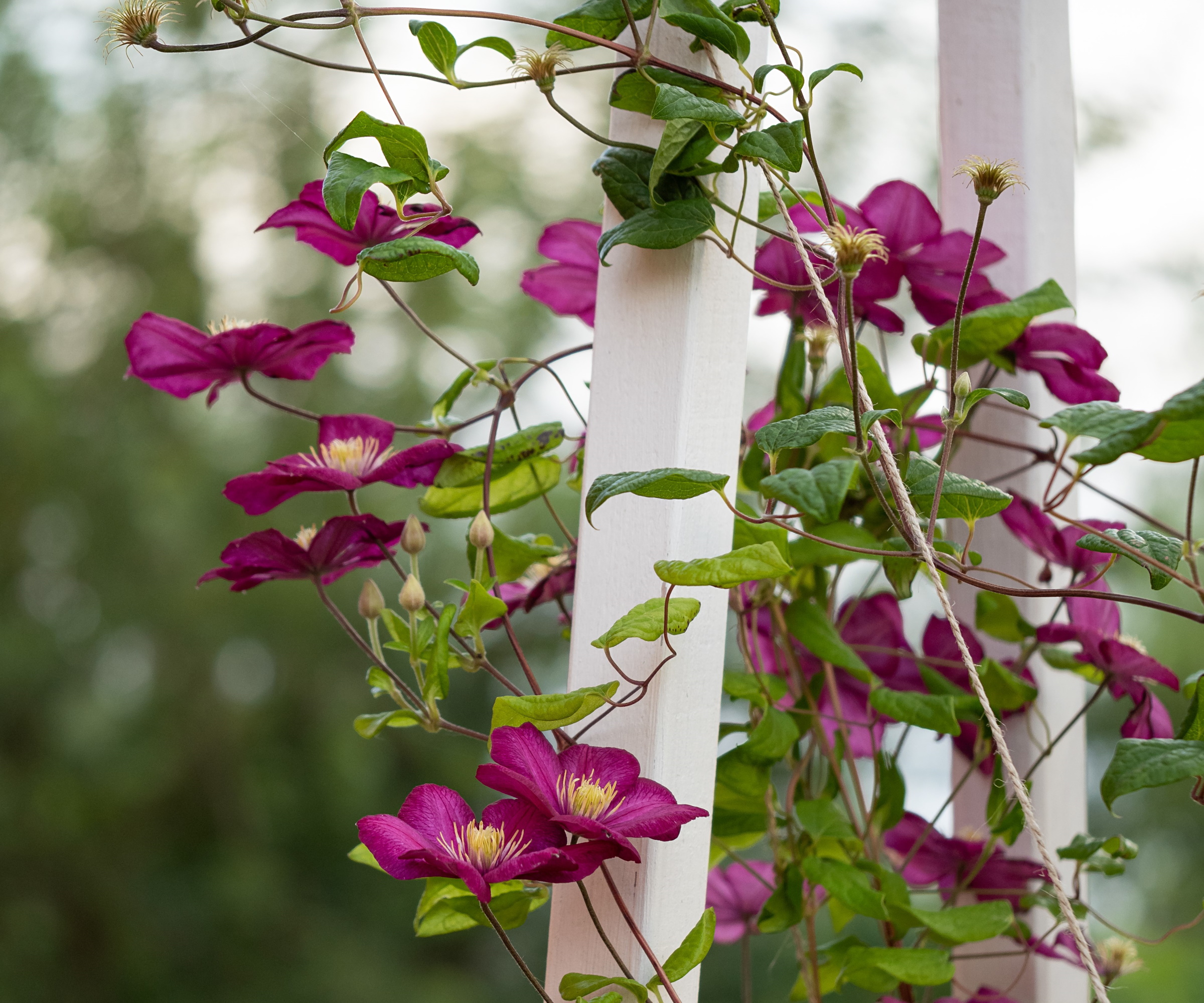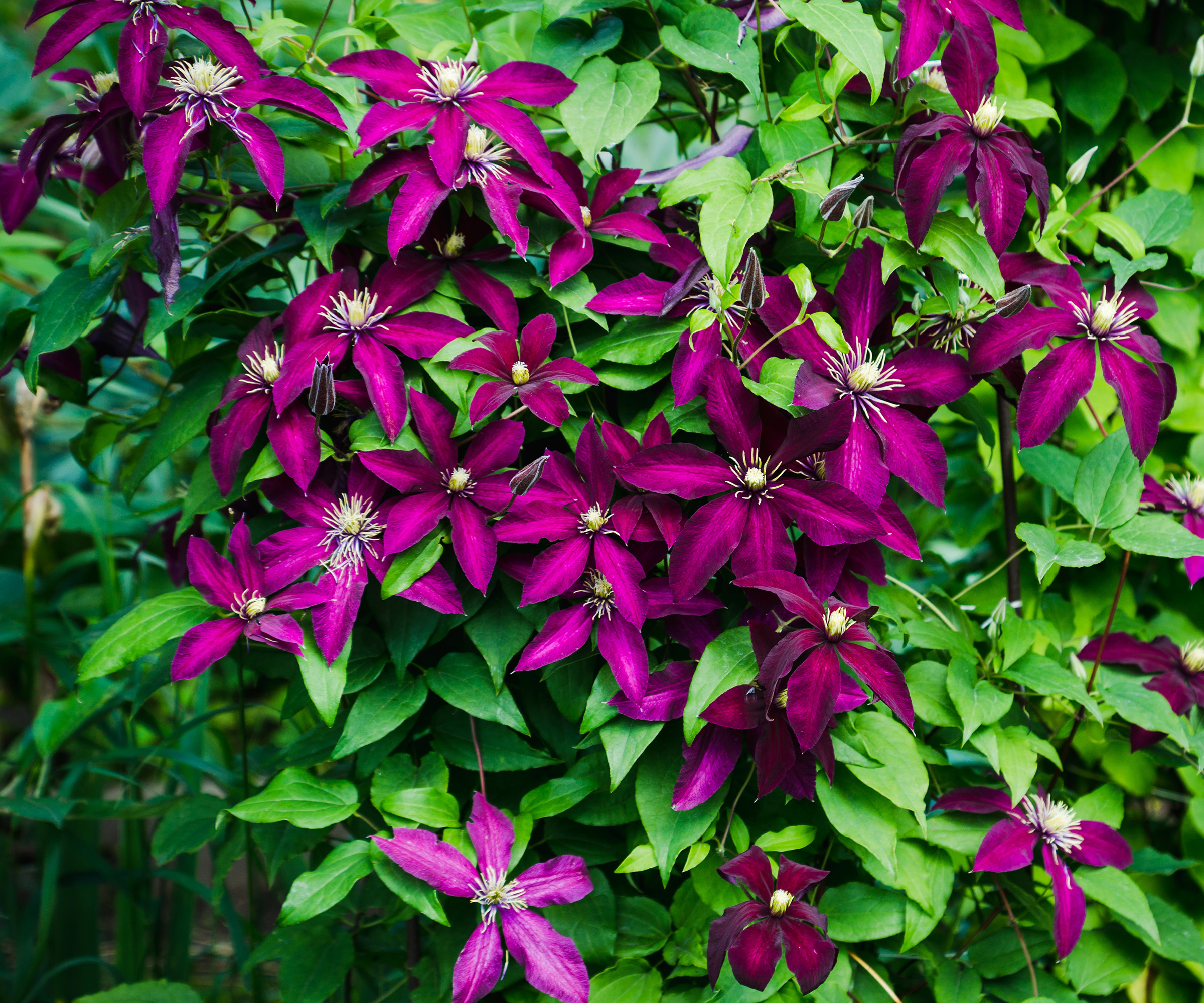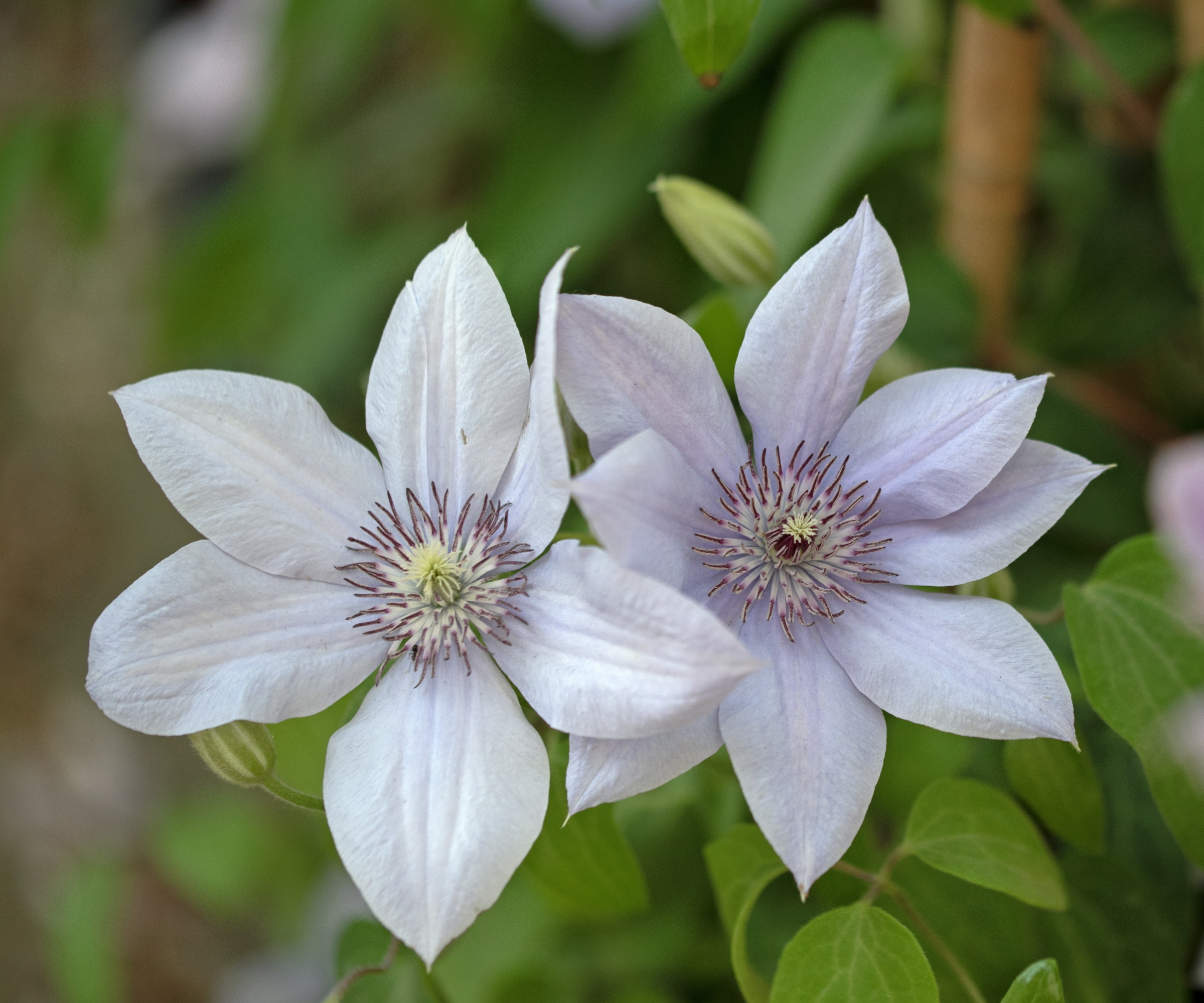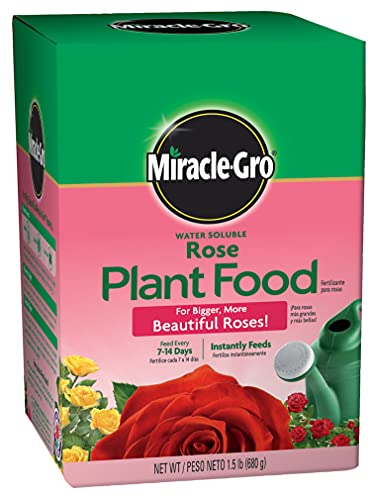How and when to fertilize clematis plants – for a profusion of colorful blooms
Feeding your clematis plants will ensure that your climbers stay healthy and floriferous


Clematis are often considered some of the best climbing plants. Each year, clematis vines fill garden fences, trellises and structures with colorful blooms that come in different shapes and sizes. What's more, pollinators are drawn to the nectar-rich flowers, typically attracting bees, butterflies and hummingbirds in the summer months.
You may already know how to grow clematis, but have you considered feeding your climbers, just as you would feed your prized flowering perennials? Applying a small amount of fertilizer for your clematis plants can help to improve the floral show and the overall health of your climbers.
Here, clematis experts discuss how and when to fertilize clematis plants that are grown in borders and containers, while also sharing the products that are the most effective for gardeners to use.

How and when to fertilize clematis
Clematis are versatile plants. Whatever your needs, there will be a clematis to suit you. There are evergreen species, winter flowering varieties, and long-flowering spring and summer options that most of us are familiar with. Many of the best clematis species and varieties are hardy in US hardiness zone 4 to US hardiness zones 10.
While each species will have different growing preferences, clematis plants tend to need sunshine to produce masses of colorful blooms. If you want to give your vines a boost this year, applying a small amount of fertilizer can help to improve plant health and flowering.
When to fertilize clematis plants

Like many other plants in the Ranunculaceae genus, including hellebores and delphiniums, clematis are heavy feeders, especially the large-flowered hybrids. Whether you grow plants in the ground or in containers, feeding can help to improve floral performance.
'From spring, as soon as the plants start to show any signs of growth, it is a good idea to top dress your clematis plants with a good quality compost or mulch,' says Cindy Tibbetts, plant expert and owner of Hummingbird Farm Nurseries. Doing this in spring will improve soil health for the growing season ahead.
'Once the plants are actively growing, I tend to feed once a month,' Cindy continues, 'feeding through spring and summer, up until the fall.' Typically, this will mean feeding your clematis plants from April until September, but in milder regions blooming can last for much longer. It is best to adjust your feeding schedule depending on the climate and your US hardiness zone.

Hummingbird Farm, owned and operated by Cindy Tibbetts is a retail plant nursery specializing in “Clematis for the Frozen North”.
How to fertilize clematis plants

From spring, it is 'best practice to sprinkle some fertilizer around the crown on your clematis plants,' says Linda Beutler, clematis expert and curator at the Rogerson Clematis Garden. 'Gardeners should fertilize once a month with the last feeding in mid-late September.'
Linda recommends using a rose feed for fertilizing clematis plants. There are many products available to buy online, such as this Miracle-Gro rose and bloom fertilizer, available from Amazon.
When planting new clematis climbers, Linda recommends combing a handful of organic rose and flower food into the bottom of the hole before you place your new clematis. Enhancing the quality of the soil during planting will help your clematis to establish during its first year.
For clematis plants grown in pots, it is best to use a liquid tomato fertilizer, such as this organic tomato feed, available from Amazon. 'Like tomatoes, clematis want a blossom booster, applied every other week,' Linda adds. 'You are watering plants in containers much more frequently than plants in the ground, so plan to fertilize more often.'
'Sometimes an otherwise vigorous clematis will start looking a little yellow in mid-summer,' Linda continues. 'This may be due to a lack of magnesium in the soil, so it might be necessary to apply some epsom salts to the soil, which can be readily purchased from garden stores.' Epsom salts are available to buy online from Walmart.
'Make sure you follow the directions on the packaging of the epsom salts,' Linda adds. 'There will be a recipe on the box for making a drench for your plants, and it might take more than one dose, so apply the drench, wait two weeks, then apply again.' Doing so should help to prevent further yellowing of the foliage.

Linda Beutler is the curator of the Rogerson Clematis Garden, North America's only accredited collection of clematis in a public garden. She is the author of Garden with Clematis (Timber Press 2004) and Plant Lover's Guide to Clematis (Timber Press 2016). She has a small garden around her house, Tanglevine Cottage, in the Sellwood neighborhood of Portland Oregon, with a lot of clematis in it.

Miracle-Gro water soluble rose plant food will promote beautiful blooms and lush foliage for your plants. Whether applied to plants in the ground or in pots, this feed will start to work instantly for quick, beautiful results. Ideal for all types of roses and other flowering plants.
FAQs
What product should I use for feeding clematis plants in pots?
For clematis plants that are grown in pots, consider using an organic tomato feed, applying once every two weeks. Tomato food has a high potassium content, which helps to encourage fruiting and flowering in all crops. As you will be watering your pots far more frequently than clematis plants grown in the ground, it is best to feed twice a month to ensure that your plants have all the nutrients they need to thrive.
Feeding your clematis plants can help to improve plant health and blooming during the growing season, and this is particularly important for those climbing plants that are grown in pots.
For more clematis growing advice, see our guide on deadheading clematis, or discover how to propagate clematis plants, and grow your climber collection this year.
Sign up to the Homes & Gardens newsletter
Design expertise in your inbox – from inspiring decorating ideas and beautiful celebrity homes to practical gardening advice and shopping round-ups.

Thomas is a Content Editor within the Gardens Team at Homes and Gardens. He has worked as a professional gardener for both public spaces and private estates, specializing in productive gardening, growing food and flowers. Trained in Horticulture at the Garden Museum, he has written on gardening and garden history for various publications, including The English Garden, Gardens Illustrated, Hortus, The London Gardener and Bloom. He has co-authored a Lonely Planet travel book, The Tree Atlas, due out in 2024.
-
 I tried this one easy dishwasher trick and made the annoying need for manual drying a thing of the past
I tried this one easy dishwasher trick and made the annoying need for manual drying a thing of the pastIf you hate those little pools of water left on your cups and crockery, this towel trick is for you
By Punteha van Terheyden
-
 Renovation Aloha's Tristyn and Kamohai Kalama share the front color you need to sell your home – they explain, 'it's one of the areas you can go a little bolder'
Renovation Aloha's Tristyn and Kamohai Kalama share the front color you need to sell your home – they explain, 'it's one of the areas you can go a little bolder'In Homes & Gardens' exclusive interview with the Kalamas, they explain the renovations to make to the front of your home for property value
By Sophie Edwards